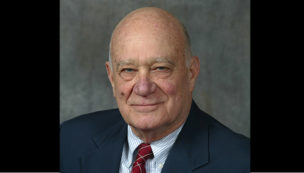What is History Day?
Why is it at Hofstra each year?
Some say that it is common sense to recognize (as Thomas Paine did) that without perspectives from the past we are all doomed to be prisoners of the present. Without a sense of our individual personal past, we would have no identity.
All of us can better gain a coherent sense of self by striving to make sense of what we’ve done, what’s happened to us, and how we have been affected by our past. “Amnesia” is a term for people who have lost a sense of memory, and as students are quick to note: memory is a synonym for history.
Without history we literally cannot know ourselves (or, indeed, know our nation’s identity). It is no accident that Jefferson replaced religion with history when he was the pioneer of America’s first public schools
Jefferson argued that history would serve two purposes: 1. it could “shake off the dead hand of the past” by helping citizens to recognize, and prevent, tyranny and abuse of societal norms; 2. it could also foster enthusiasm as people tried to follow the affirmative examples of those who preceded them and served the public good.
Significantly, sculpture was Jefferson’s favorite art form because it gave life-like, enduring public recognition to those who exhibited benevolence in their lives and who were models for others in a democracy.
History Day at Hofstra continues to serve Jefferson’s ideals of energizing and educating individuals for responsible, caring and thoughtful citizenship.
Each March, for more than four decades, students from Nassau and Suffolk counties come to the university to participate in the major regional History Day in New York State.
From Hofstra, our top students go to Cooperstown for state-wide historical endeavors, and from Cooperstown, “the brightest geniuses – the natural aristocracy,” (as Jefferson characterized them) go on to National History Day at the University of Maryland.
We Long Islanders (especially from North Shore Schools) have good reasons to be proud of what our students did at the Sunday, March 18 Hofstra Regional History Day, and what they have been doing for decades.
Why is Hofstra the host of History Day?
Simply because Hofstra alumnus Richard Marks (I am proud to note that he was my student) proposed our university as the regional center when he was a beginning teacher. Early on, the program was modest (a few schools, 50 students); almost all the event judges were members of the Hofstra History Department.
On March 18, 43 middle and high schools participated; there were 103 judges, with more than a dozen leadership coordinators, led by Hofstra VP Melissa Connolly.
More than 800 students, teachers and parents were expected at the awards ceremony.
As a member of the Hofstra community since 1960, I am enormously proud of what my university has done working with Long Island teachers and students to foster love and knowledge of history.
I am especially impressed by what our Long island students demonstrate, from grades 6 through 12, by their research, their sense of inquiry, and their critical analysis. We in Nassau and Suffolk are spurring the development of future leaders – youth who have been challenged to seek reliable data as paths to informed judgments.
At this Sunday’s History Day, I observed high levels of historical investigation by several junior high school students who participated in the group performance category. Two students portrayed conflicting sides of the Vietnam War.
One was a veteran who had a leg amputated in combat; the other had been a college protestor.
They reviewed their past friendship, each claiming to be the “patriot” who upheld American values. Their performance dialogue reflected a depth of knowledge about the youth conflicts and the political disputes of the era. Many parts of their discourse were intense, emotional – and dramatic.
As these two performers interacted, they came to a common ground conclusion about the conduct of the war (one worthy of the recent series by Ken Burns). They concluded by forming a bond from shared, revelatory historical perspectives.
In another group performance, three North Shore Junior High School students showed what the integration of Little Rock High School was like for the nine “Negroes” who were harried, abused and spat upon from their first day on.
One of the youngsters also showed the racist resistance by Arkansas Governor Orval Faubus. After each point of brutality and racist horrors, the three girls linked arms and chanted in unison: “But we endured.”
They completed their performance with a rapid-fire listing of racial progress since 1957, and a clarion call for continued attention to racial reckoning, and to enhancing respect for our nation’s ethnic diversity.
In future columns, I plan to say more about the exceptional civic engagement of our Long Island students, with some special focus on those who represent us in New York and National History Days.



